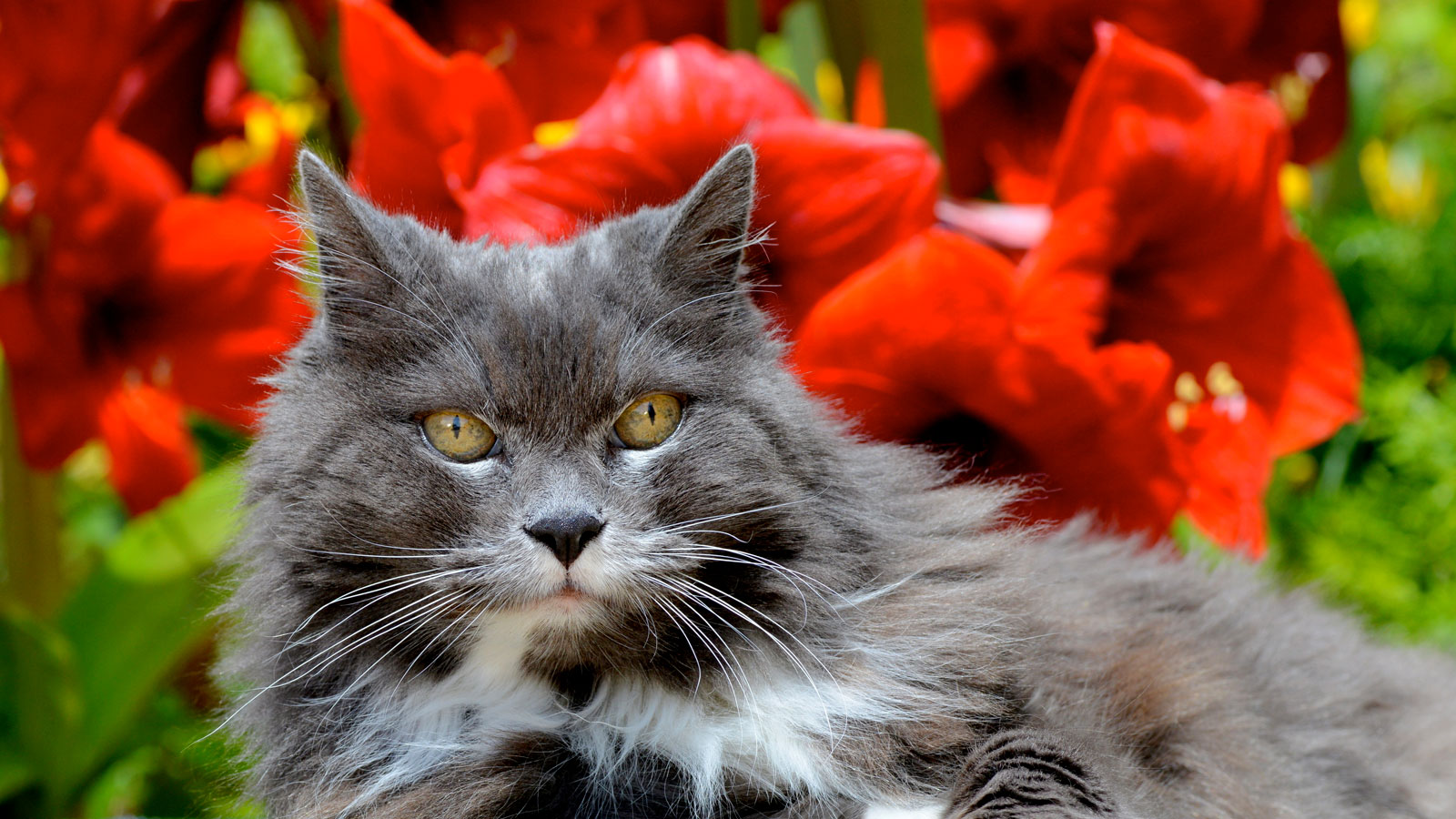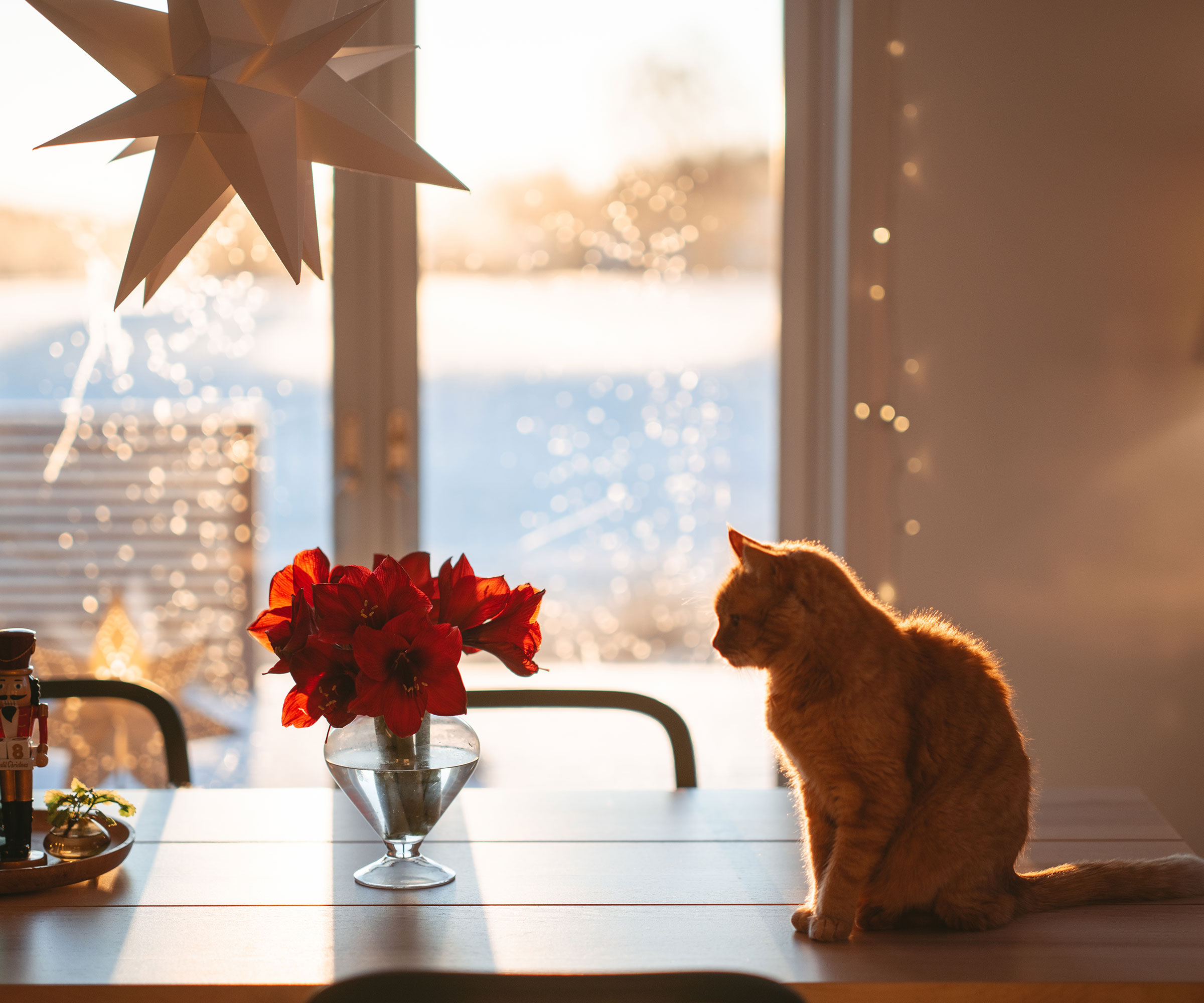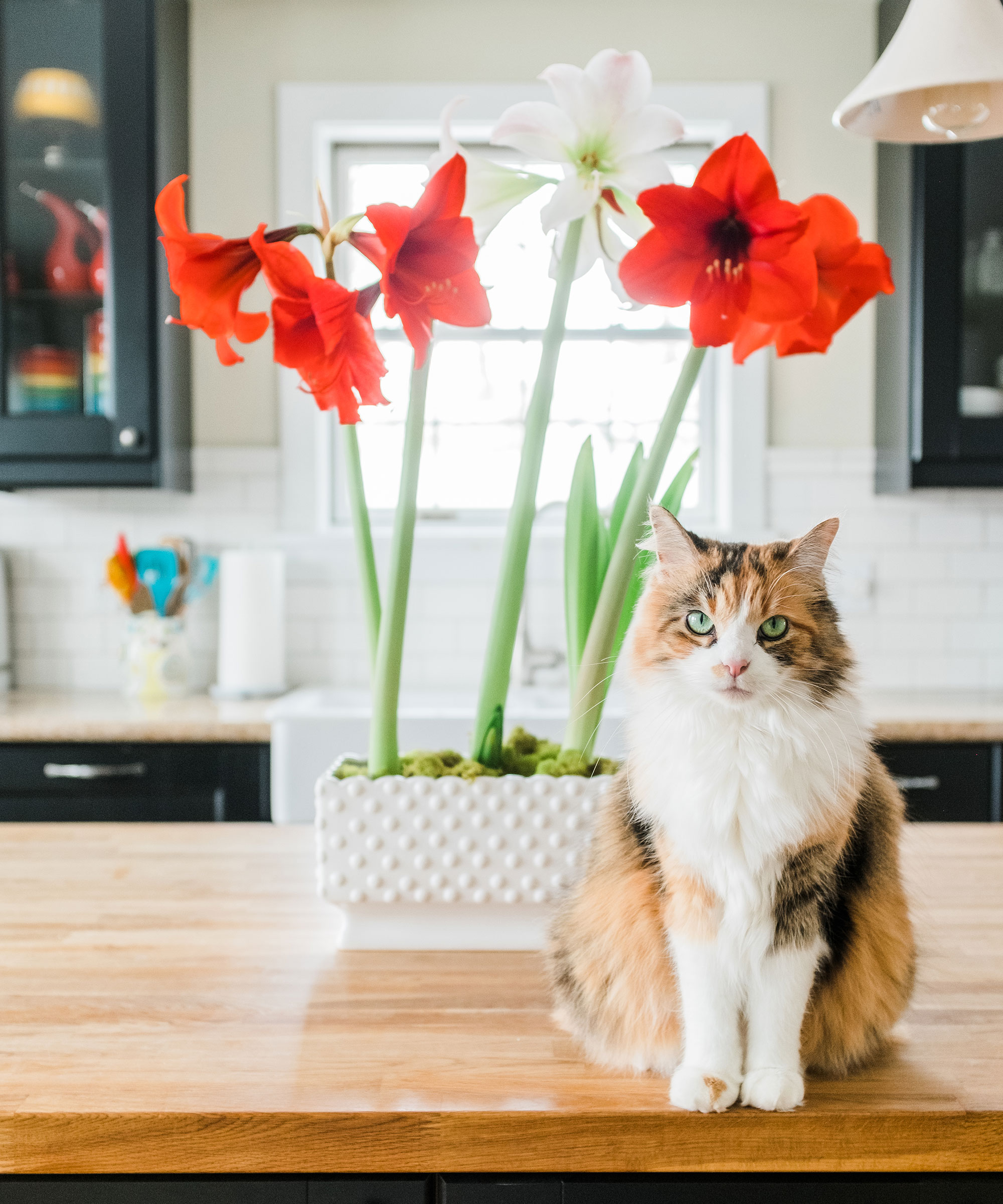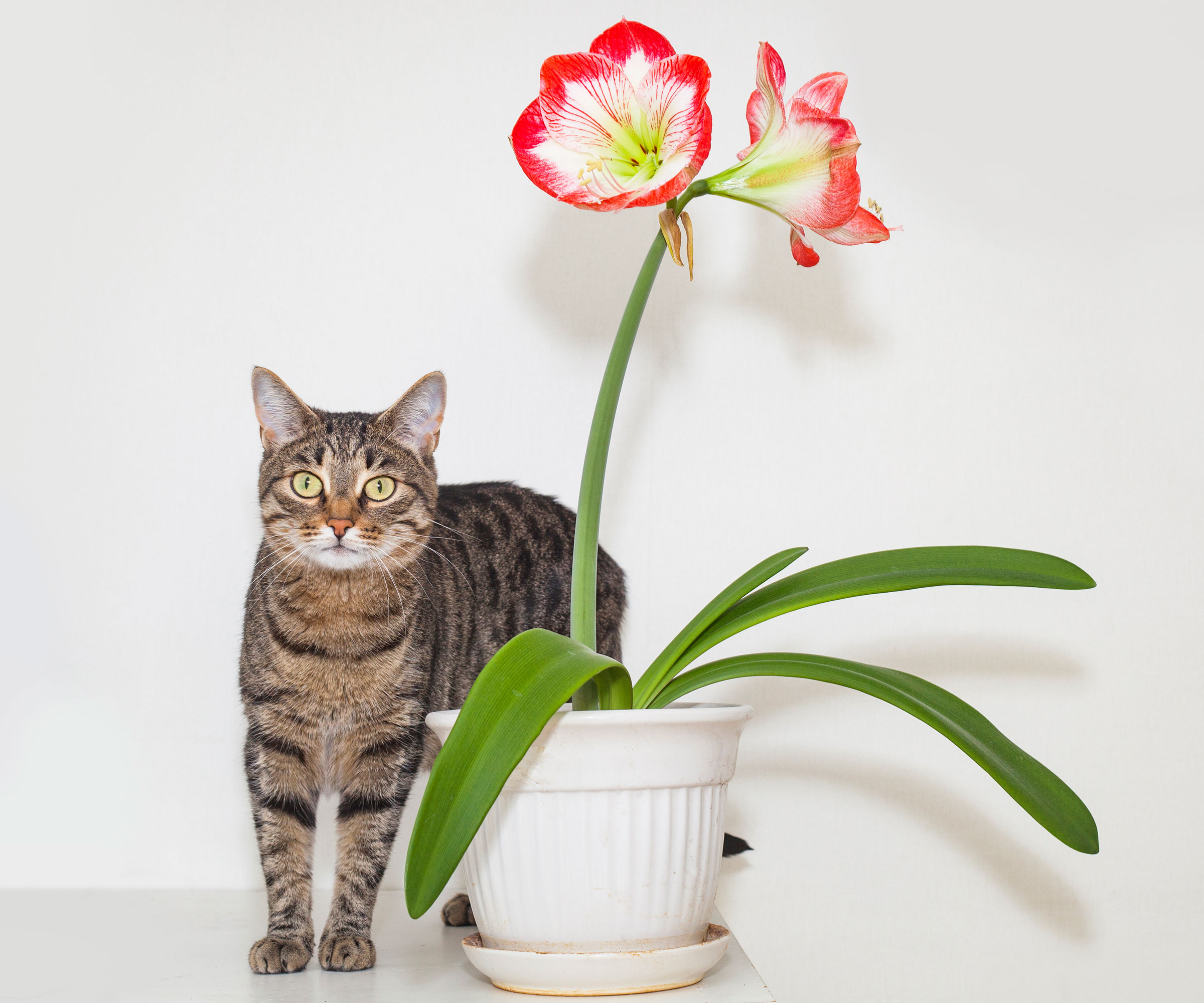Are Amaryllis Plants Poisonous To Cats? How You Can Tell – And What To Grow Instead
The holiday season is a perfect time to showcase your favorite Christmas blooms, but are amaryllis plants poisonous to cats? Here’s how to keep felines safe and well


Holiday decorations and displays add easy cheer to the home, but before we get all relaxed and merry, it’s worth sparing a thought for our resident pets. You may adore seeing festive red blooms brightening up your windowsills and mantelpieces – but are amaryllis plants poisonous to cats?
Christmas is a popular time to get seasonal houseplants like amaryllis or poinsettia, but many cats like to chew on plants. If you decide to grow amaryllis, it may be particularly attractive to cats if flowers and leaves are positioned at mouth level. A few nibbles on many houseplants is not a big concern, but is amaryllis dangerous for cats? You may already have taken steps to cat-proof your houseplants, but here we show you how to best protect your pets from these festive favorites.

Is Amaryllis Toxic to Cats?
If you have cats and want to use festive houseplants during the holidays, it’s worth asking: is amaryllis toxic to cats? Perhaps you don’t know which plants are toxic to cats and suspect that this holiday favorite may be risky for feline friends? Unfortunately, the answer is that yes, they can be. Amaryllis plants contain chemicals called alkaloids and oxalates which cause gastric distress and some other symptoms in both cats and dogs.
All parts of amaryllis plants contain these harmful compounds, but they are most concentrated in the bulb. This is true of several holiday amaryllis varieties that you might be keeping indoors during the festive period. While they are not as toxic as some other plants (like lilies), eating any amount of amaryllis could make your pet sick – and large amounts could be fatal.
Signs of Amaryllis Poisoning in Cats
Amaryllis poisoning causes several symptoms. They vary depending on how much a cat has consumed. A small amount of amaryllis may just cause some oral irritation and drooling. Larger amounts can cause the following symptoms, so watch for:
- Vomiting
- Diarrhea
- Loss of appetite
- Lethargy
- Depression
- Tremors
- Drop in blood pressure (hypotension)
- Respiratory distress.
You may also notice that a plant looks like it has been chewed. Examine the plant to get an idea of how much your pet might have eaten.

What to Do if Your Cat Eats Amaryllis
If you see a few signs of a cat-damaged plant but you are certain that your cat ate only a small amount of the plant and they are not exhibiting alarming symptoms, they might not need any care. Remove the plant to a location they cannot access, remove any plant material from their mouth, and watch your cat carefully for symptoms.
It’s always best, of course, to call your vet for advice if you suspect your cat ate part of a toxic plant. Your vet can determine if they need care. If you have any doubts or cannot reach your vet, call a 24-hour emergency vet or take them there immediately for treatment.
Sign up for the Gardening Know How newsletter today and receive a free copy of our e-book "How to Grow Delicious Tomatoes".
How to Prevent Your Cat From Eating Amaryllis
Prevention is always better than needing emergency care for your furry friend. The best prevention, of course, is to not have toxic houseplants in the home. However, there are some ways to enjoy amaryllis and similar plants while keeping your cat safe.
Find a place where your cat cannot reach the amaryllis. A high place with no access should keep them safe. If you don’t have a place your cat can’t reach, consider placing the plant inside a terrarium. Alternatively, spray the plant with something that tastes bad to cats. You can find these products at pet stores.You could also try growing other cat-repellent plants nearby.
Another option is to train your cats not to eat plants. That said, if you have ever tried to train a cat not to do something, you know that this plan is not foolproof!

Cat-Friendly Alternatives to Amaryllis
If you don’t feel safe with amaryllis in your home over the holidays, consider indoor plants that cats will avoid and so are consequently cat-safe. They may not be traditionally Christmas plants, but they still cheer up the home:
- Gerbera Daisies: These cheerful daisies are excellent houseplants and are totally non-toxic for pets. Get red gerbera daisies for indoor holiday décor as a safe replacement for red amaryllis.
- Orchids: Orchids make great houseplants any time of year and most varieties of orchid are relatively safe for pets. It’s easy to find a variety of orchids at garden centers. Use pure white orchids for seasonal decoration.
- Roses: Roses are cat-safe and pretty at any time of year. For Christmas, consider a potted mini rose. Red rose varieties are especially attractive.
Frequently Asked Questions
What is the Most Poisonous Household Plant for Cats?
Is an amaryllis poisonous to cats? Yes, but is it the worst offender in the home? What of other plants? Several plants are toxic to cats but lilies may be the most poisonous. All parts of the plant are toxic, and even small amounts consumed can be fatal.
Which Part of Amaryllis is Poisonous to Cats?
Asking the question ‘is amaryllis poisonous to cats?’ is important, but what about different parts of the plant? Fortunately, the most toxic part is the bulb, which cats are less likely to chew. However the stems and flowers are also harmful. The amount consumed can have a large bearing on how sick your cat could get.

Mary Ellen Ellis has been gardening for over 20 years. With degrees in Chemistry and Biology, Mary Ellen's specialties are flowers, native plants, and herbs.